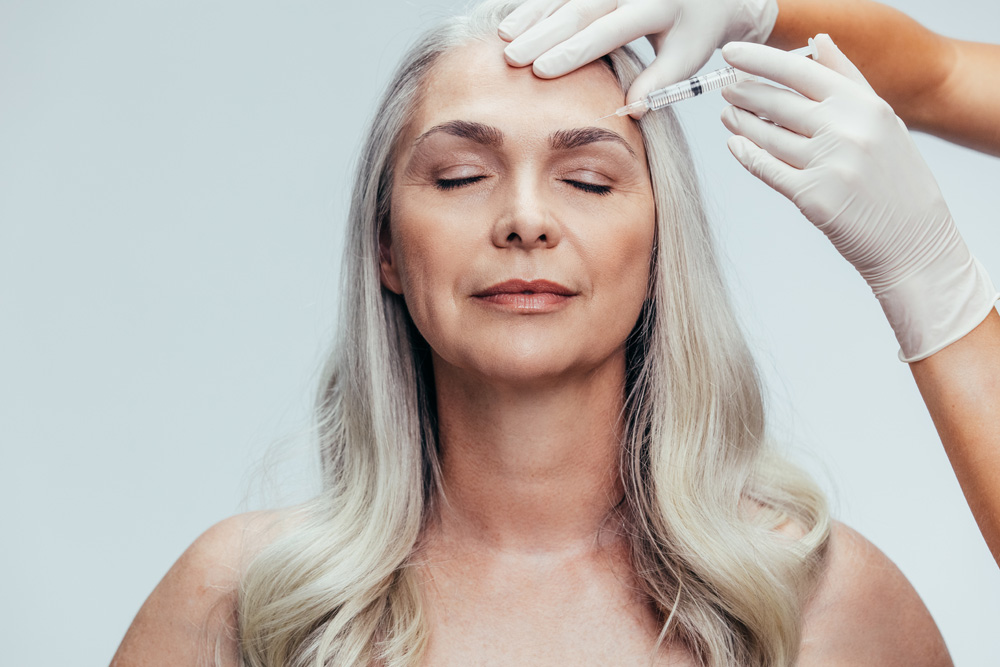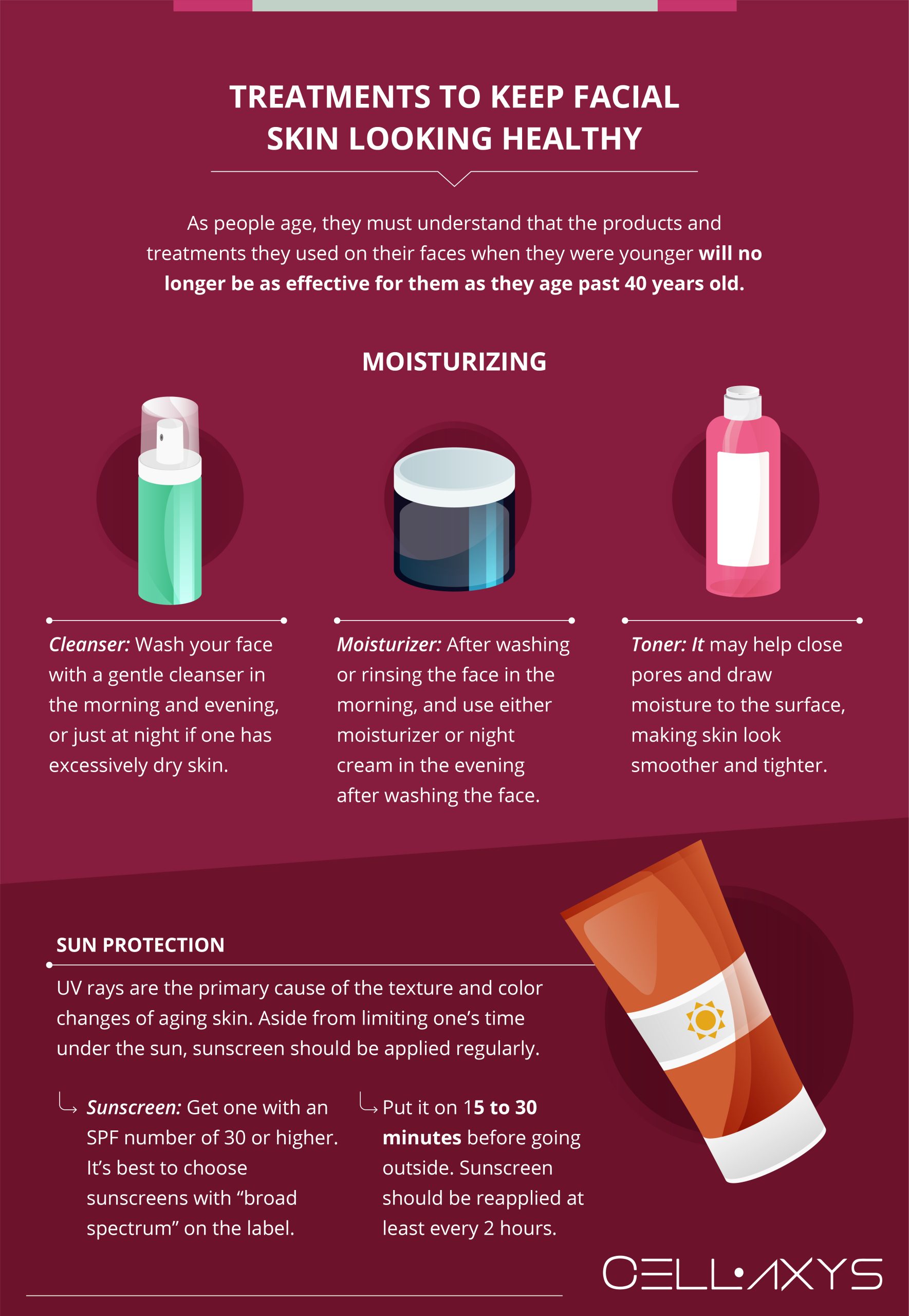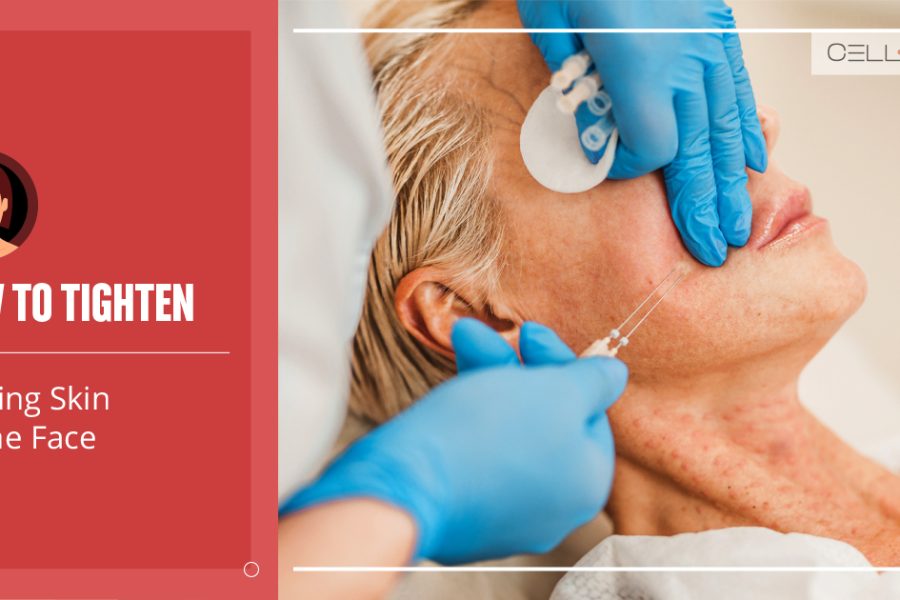Published on: March 30, 2020 | Updated on: August 29, 2024

Older skin experiences the decreased production of collagen and elastin, the two elements responsible for firmness in younger skin. As skin ages, it becomes less elastic, resulting in wrinkles and sagging. Skin also produces less natural oil, so it can’t “plump up” those fine lines the way it used to.
While people probably aren’t seeing deep wrinkles and serious sagging in their 40s, they may have crow’s feet, blotchiness, and less firm skin especially on their face than they did 10 years ago. If a person has also spent a decade or two smoking, with excessive sun exposure or an unhealthy diet, they may have a few extra lines or age spots to contend with.
Treatments to Keep Facial Skin Looking Healthy

As people age, they must understand that the products and treatments they used on their faces when they were younger will no longer be as effective for them as they age past 40 years old. Effective treatments for aging skin include:
Moisturizing
A person’s daily routine should include washing their face with a gentle cleanser in the morning and evening, or just at night if one has excessively dry skin. Apply moisturizer after washing or rinsing the face in the morning, and use either moisturizer or night cream in the evening after washing the face.
A non-drying toner may help close pores and draw moisture to the surface, making skin look smoother and tighter. Oil production slows down after age 40, so it is necessary to replenish the skin more frequently.
Sun Protection
Some sun can obviously be good, but moderation must be considered as ultraviolet (UV) rays from the sun can be damaging to the skin. UV rays are the primary cause of the texture and color changes of aging skin. Aside from limiting one’s time under the sun, sunscreen should be applied regularly.
Look for a sunscreen with an SPF (sun protection factor) number of 30 or higher. It’s best to choose sunscreens with “broad spectrum” on the label. Put the sunscreen on 15 to 30 minutes before going outside. Sunscreen should be reapplied at least every 2 hours.
Exfoliate Regularly
Aiding in cell turnover by removing the dead stuff (the process of exfoliation) is key to keeping skin clean and the lymphatic system moving. Use a gentle exfoliant about once a week. Make sure to never over-scrub. Over-scrubbing the face can trigger the overproduction of oil, which is counterintuitive to the exfoliation process.
Avoid Unhealthy Food
A healthy diet is key to the skin’s health. Avoid foods that are packaged, processed, and high in sugar, as well as dairy. Excess sugar, dairy, and processed foods can cause skin inflammation, leading to rashes and breakouts.
Look for foods that are high in not only antioxidants, but also probiotics, which are naturally occurring, good bacteria that help strengthen the immune system. A strong immune system strengthens all of the protective organs, including the largest one, the skin. High levels of probiotics can be found in yogurt and kefir as well as kale, kombucha, and sauerkraut.
Other helpful foods to keep skin healthy include lean proteins, fruits and grains with the vegetables B3, A, C and E.
Stay Hydrated
Drinking enough water is essential for overall skin health. Just like the other organs of our body, skin is also made of several cells. Skin cells like any other organ cells require water to function properly.
Water is essential to maintain the optimum skin moisture and deliver essential nutrients to the skin cells. It replenishes the skin tissue and increases its elasticity. This helps delay the appearance of signs of aging like wrinkles and fine lines.
Drinking enough water combats skin disorders like psoriasis and eczema. It also increases the metabolic rate and improves the digestive system to flush out toxins from the body. This in turn gives the skin a healthy and glowing look.
Stem Cells and PRPs for Skin Treatments
Perfect skin is a myth. Commonly, people enhance their skin using anti-aging treatments. Perhaps the most successful breakthrough method of recent years for facial skin health is the use of stem cells and platelet-rich plasma injections (PRPs) for the face. Like any other damaged or injured body part, proper and effective treatment can restore the skin to full health.
Stem cell and PRP injections, although new and innovative, have become firmly and reliably established as a premier method for facial skin revitalization, especially in cases of serious facial damage. The steps to the procedure are as such:
- A blood sample is taken from the patient.
- Stem cells are extracted from the patient’s bone marrow or fat tissue.
- The blood sample is deposited in a centrifuge, which separates its different components.
- Platelet-rich plasma (PRP) is separated and obtained from the blood sample. This concentration of platelets within liquid plasma contains the primary blood components involved in clotting, cell recruitment, cell multiplication, and cell specialization (the processes that enable healing).
- Stem cells are added in conjunction with PRP concentration. The addition of stem cells accelerates and catalyzes regeneration and is especially recommended in cases of serious injury or skin damage.
- Stem cell-enriched platelet-rich plasma is delivered to the affected skin by injection. In some cases, ultrasounds will be used to improve precision.
- The needling of facial skin stimulates immune response and causes a massive replenishment of platelets, collagens, elastin, fibroblasts, and growth factors.
- Over the following six weeks, facial tissue will regenerate and new collagen will form.
Summary
Just about everything that is done to one’s skin during the course of their lifetime will leave some lasting impression. The aging process is something that happens naturally. Wrinkles, thinning, sagging, and dryness are all part of this process. As skin ages, it is not as efficient at producing elastin and collagen, the proteins that keep the skin strong and elastic.
There are plenty of at-home treatments to keep one’s facial skin looking healthy. Some methods include, moisturizing, eating healthy, staying hydrated, and staying protected from the sun. These are recommended for someone who wishes to preserve their skin as they age. However, these methods are best used as preventative measures rather than corrective ones.
Platelet-rich plasma and stem cell injections are highly effective treatments for damaged skin due to aging. If there ever was a way to “reverse the clock”, regenerative therapy is the solution.
CELLAXYS does not offer Stem Cell Therapy as a cure for any medical condition. No statements or treatments presented by Cellaxys have been evaluated or approved by the Food and Drug Administration (FDA). This site contains no medical advice. All statements and opinions are provided for educational and informational purposes only.
Dr Pejman Bady
Author
Dr. Pejman Bady began his career over 20 years ago in Family/Emergency Medicine, working in fast-paced emergency departments in Nevada and Kansas. He has served the people of Las Vegas as a physician for over two decades. Throughout this time, he has been met with much acclaim and is now the head of Emergency Medical Services in Nye County, Nevada. More about the doctor on this page.
Dr Pouya Mohajer
Contributor
Pouya Mohajer, M.D. is the Director of Spine and Interventional Medicine for CELLAXYS: Age, Regenerative, and Interventional Medicine Centers. He has over 20 years of experience in pain management, perioperative medicine, and anesthesiology. Dr. Mohajer founded and is the Medical Director of Southern Nevada Pain Specialists and PRIMMED Clinics. He has dedicated his career to surgical innovation and scientific advancement. More about the doctor on this page.








